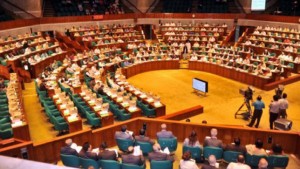Manila (Hilary Chiew) – Developing countries expressed their deep concerns that discussions on financial instruments to address loss and damage associated with the adverse effects of climate change are overly focused on addressing the risks of loss and damage rather than deal with the actual loss and damage suffered by developing countries from climate related events.Several members from non-Annex 1 countries under the United Nations Framework Convention on Climate Change (UNFCCC) (who are mainly developing countries), voiced their concerns and displeasure at the recently concluded 2016 Forum of the UNFCCC’s Standing Committee on Finance (SCF), held at the headquarters of the Asian Development Bank in Manila, Philippines on 5 and 6 September, 2016.
(The SCF was established in 2010 by the Conference of Parties [COP] of the UNFCCC with the mandate to assist in exercising its functions with respect to the financial mechanism of the Convention).
The theme for the two-day forum was on ‘Financial instruments that address the risks of Loss and Damage’. The Forum was held in cooperation with the Asian Development Bank and the Philippines’ Climate Change Commission.
Bernarditas Muller (Philippines) said that the Forum is not so much about addressing the risks of loss and damage but to deal with loss and damage that has occurred and are occurring now in developing countries from climate change effects.
Her intervention was made immediately in response to presentations at the scene-setting session at the start of the Forum, cautioning participants that the forum risked being side-tracked by discussions that might not address the urgent financial needs of loss and damage incidents.
Mueller’s concerns were also shared by other participants from developing countries, as well as a representative from civil society.
Minister for National Policies of the Presidency of Nicaragua, Dr. Paul Oquist lamented that social protection schemes, insurance and contingency finance as well as national budgets for disaster preparations are not going to be enough for loss and damage events and Parties must look at other mechanisms to help developing countries.
Dr Doreen Stabinsky of the College of Atlantic stressed that there are limits to risk transfers, adding that slow onset events will be permanent and irreversible and there are no instruments currently to deal with these most damaging and expensive impacts of climate change.
The Forum began with a presentation on the Overview of the range of approaches to address the risks of loss and damage,Dr Swenja Surminski of the London School of Economics and Political Science said a wide range of approaches exist and determining a typology is difficult due to different interpretations, characterisations and expectations.
She noted that different risks require different responses and this is particularly important for sudden and slow onset events, but also for economic and non-economic losses.
Citing Article 8 of the Paris Agreement that deals with loss and damage from the adverse effects of climate change, she outlined the activities to meet the goal as:
– Averting loss and damage: mitigation and adaptation actions that avert future loss and damage;
– Minimising loss and damage: ‘managing’ or ‘reducing’ current and future loss and damage;
– Addressing loss and damage: dealing with current and future loss and damage occurrence, including those that are ‘unavoidable’, also known as residual risks.
The approaches, said Surminski, include risk reduction, risk retention, risk transfer, managing slow onset climatic processes and, establishing an enabling environment and managing the impacts of climate variability and change.
She added that risk reduction covers measures undertaken before an extreme event occurs and it includes structural measures such as infrastructure to reduce the effects of extreme events and non-structural measures such as early warning systems and behavioural change planning.
Risk retention can be defined broadly as a country allowing itself to ”self-insure” against climatic stressors through activities such as building the resilience of community via social protection scheme or through financial means such as establishing reserve funds for the purpose of offsetting unexpected financial burdens associated with climatic stressors, she added further
Surminski explained that risk transfer refers to approaches that shift the risks of loss and damage, mostly financial, from one entity to another when a country or entity assesses that the potential of loss and damage it could experience is greater than its ability to manage it.
Approaches for managing slow onset climatic process are combinations of risk reduction measures and climate change adaptation, she said further.
In terms of the enabling environment, she added that there is a case for creating frameworks or institutions that more closely link approaches to address loss and damage and emphasise complementarities.
Among Surminski’s general observations from existing applications are:
– there is no silver bullet but a combination of approaches is required;
– there is a persistent lack of knowledge on effectiveness and limits of existing approaches ;
– perspective and understanding of loss and damage (scale, type, time) will determine choice of instruments;
– developing countries face many challenges, among them data, resources, enabling environment;
She noted that participants should focus on three specific points which are the importance of selecting the right tool mix; that the biggest gaps are slow onset risks and if we are succeeding in integrating approaches.
Surminski further noted that the full potential of utilising risk transfer for risk reduction and risk management is far from exhausted but recent progress has been promising, citing the example of the African Risk Capacity (ARC), which is a specialised agency of the African Union (AU) (set up in 2012 to help member states of the AU to improve their capacities to better plan, prepare and respond to extreme weather events and natural disasters).
During the SCF Forum, participants were presented with insights and case studies on four types of existing financial instruments that address the risks of loss and damage at different levels and sectors in two parallel panels. The discussion was aimed at highlighting the benefits, challenges as well as gaps, limitations and favourable conditions of the financial instruments.
The four financial instruments are risk transfer schemes including insurance products and tools, social protection schemes, catastrophe and resilience bonds, and contingency finance.
In response to Muller, Surminski agreed that it is important to address the concern upfront but noted that the use of the term ‘risk’ which relates to the probability of the risk occurring, and the concern addressed by Muller was “a philosophical debate”.
Following are highlights of two of the financial instruments that were presented at the Forum.
Presenting the ARC case, country engagement manager Tuga Alaskary said the specialised agency is governed by a board of African ministers and experts. In 2014, its first financial affiliate, the ARC Insurance Company Limited was established, she added.
Through its unique structure, said Alaskary, ARC brings together three critical elements for its participants and their partners – early warning (Africa RiskView), response (contingency planning) and insurance (index-based insurance and risk pooling).
She said ARC is currently providing index-based drought insurance and is adding cyclone insurance this year and flood insurance next year.
Explaining further, she said ARC started with 18 original signatories and added another 14 by January this year. It covered nearly US$180 million of climate risk for 2015/2016. It has since made a payout of US$ 26.3mil in 2015, benefitting 1.3mil people in three drought-affected countries in the Sahel – Senegal, Mauritania and Niger – with targeted food distribution and feed for livestock. The three countries had paid a combined premium of US$ 8mil for drought insurance. It aims to insure 150 million people in Africa by 2020 with US$1.5-US$2 billion in coverage across 30 countries.
Alaskary said ARC is exploring with the African Development Bank (AfDB), European Union and others on providing finance for high risk countries with low resilience to join ARC to ensure that countries with operational capacity to use payouts but lack funding to pay the premiums will be covered.
Other expansion plans of the ARC included capacity building, research and development and extreme climate facility, she said further
As an African solution to one of the continent’s most pressing challenges, Alaskary said that the ARC’s extreme weather insurance mechanism designed to help A U member states to resist and recover from the ravages of drought and has provided participating African countries with quick-disbursing funds in the event of drought. It also assists countries in developing drought response contingency plans to implement timely and effective response, she added further. .
Alaskary said that ARC offers the most value when it protects hard-won gains made through development investments that support long-term resilience against food insecurity that can address chronic risks and provide a base of predictable on-going assistance that can support poor and vulnerable households to build assets and livelihoods, which will in turn develop resilience to cope with normal and somewhat frequent, mild shocks (every two to four years) without external assistance.
She said further that tools such as ARC offer the most value, providing dedicated contingency funds that can scale up safety net systems in a reliable, timely manner, allowing systems to remain solvent and sustainable, protecting hard-won gains for households, and reducing the country’s reliance on emergency appeals.
Sharing the experience of the Caribbean Catastrophe Risk Insurance Facility – Segregated Portfolio company (CCRIF-SPC), its chief executive officerIsaac Anthony said the economic costs of natural disasters have increased dramatically over the past century.
He said governments need to be encouraged to develop, make provisions for, or participate in integrated disaster risk financing strategies, as part of their overall risk management strategy.
Outlining three reasons for governments to pursue ex-ante financing strategies, he said, first of all, governments are typically responsible for large portfolios of public infrastructure assets subject to risk.
Secondly, such strategies could guarantee sufficient capital for emergency relief and assistance to affected households, businesses and communities, he said further.
“If governments lack the necessary infusion of post-disaster capital to rebuild critical infrastructure, restore homes and provide humanitarian assistance, indirect costs can greatly surpass the direct losses of a disaster,” he added.
Finally, he said developing countries have a higher propensity for post-disaster resource deficits. Governments of developing countries typically must divert from their budgets or from already disbursed development loans to finance post-disaster expenses, and also relie on new loans and donations from the international community, he added.
He cautioned that risk transfer does not directly prevent or reduce the risks of loss and damage although the financial liquidity provided by risk transfer approaches can reduce some of the indirect effects of damages.
Anthony said CCRIF was prompted by Hurricane Ivan in 2004 and became the world’s first multi-country risk pool providing parametric insurance. Originally designed to limit the financial impacts of catastrophic hurricanes and earthquakes, in 2014, the facility was restructured into a segregated portfolio company (SPC) to facilitate expansion into new products and geographic areas, thus renamed as CCRIF-SPC.
By establishing segregated portfolios, CCRIF is able to prevent the cross-subsidisation of risks from one region to another, ensuring that each region’s risk will be based on the particular risk profiles of the countries in that region, he added .
He said that in April 2015, Central American countries were able to formally join the facility with Nicaragua as its first Central American member.
He informed participants that at present, CCRIF-SPC offers earthquake, tropical cyclones and excess rainfall policies to Caribbean and Central American governments and makes payouts within 14 days after an event. Since 2007, it has made 15 payouts totalling US$38.7mil to 10 member governments, he said further.
Anthony said payouts were used to cover the salaries of key emergency personnel, repair critical infrastructure, install meteorological data collection equipment and provide general budget support.
On the limitation of the risk transfer instrument, Anthony said most current and potential member countries face fiscal constraints, noting that some countries placed limited attention on the linkages between fiscal policy and disaster risk management, which can result in low level coverage for these countries.
On gaps, he said the ‘Excess Rainfall’ policy introduced in 2013, filled a major gap of the ‘Tropical Cyclone’ policy available from 2007 which account for wind and storm surges only and not from rainfall, which causes much damage during hurricanes.
He said the success of CCRIF-SPC lies in its low premium through risk pooling and in providing discounts and bundling products when possible and being flexible and responsive to members’ needs such as expanding into new geographical regions and providing preferable policy options.
Following the report back session of the breakout groups’ discussion on the four instruments, developing countries members again raised their concerns of the direction of the Forum.
Muller (Philippines) noted that what she has learnt from the presentations still did not answer the question of addressing loss and damage.
“Are we financing risks or loss and damage? Our understanding of loss and damage is a permanent and irreversible loss. What we expect from this Forum that will report back to the COP (referring to the November COP in Marrakech) is how we are going to get financial channels for permanent and irreversible loss and damage,” emphasised Muller.
“Insurance companies measure risks before they insure … but this is not what we want to see coming out of this Forum. (I understand) that presenters are responding to guiding questions (of the session) and theme of this Forum but the theme is not exactly what we need in order to address loss and damage under the Convention,” she stressed.
Echoing Muller, Kindy Rinaldy Syahrir of the Ministry of Finance, Indonesia said, “In my view, we need to discuss the workplan of the Warsaw International Mechanism for Loss and Damage (WIM) which will be reviewed at the next COP. Given the time spent here, it is hoped that by the time of Marrakech, we will find other mechanisms other than these market mechanisms. For the Group of 77 and China, this will be a crucial instrument we are waiting for.”
Dr. Paul Oquist, theMinister of Nicaragua recalled that as a member of the WIM Executive Committee, he had pointed out earlier at the last SCF meeting ( in Bonn held from 18-20 July, 2016 which discussed the draft programme of the Forum) that the financial instruments that address risks are not going to work.
He pointed out that the WIM’s proposed full citation did address loss and damage in general and not only risks, adding that he knew it because he was the person who wrote it as a member of the interim committee.
“We cannot reduce (responses) to insurance. We can add up social protection schemes, national budgets for disaster preparations, insurance and contingency finance but it will still not be enough. Going forward, we will have more events of loss and damage so we must look at other mechanisms,” he stressed
“The Pacific island states are facing existential threat. Instead of becoming sinking islands, they will become highly indebted sinking islands (in reference to the need to to borrow money to pay for high insurance premiums),” lamented Oquist.
“Who should come out with indemnisation of those countries suffering such consequences? This is not way-off-the-wall but an integral part of common law called tort,” he added.
Dr Doreen Stabinsky of theCollege of Atlantic also echoed the concern. Noting that there was so much conversation on risk transfer, she said it is useful to identify not just the possibility of these instruments. “We need to understand that there is limit to risk transfer such as it is insufficient for slow onset events which has high probability as insurance does not cover events with 100 per cent probabilities. Slow onsets will be permanent and irreversible and it is getting clear that there is no instrument to deal with these most damaging and expensive impacts of climate change,” warned Dr Stabinsky.
Facilitating the report back session, SCF’s member Randy Caruso (United States) noted the frank and direct questions that are useful for Parties to ponder. A developing country participant noted that the poor presence of developed countries representatives showed that they were not interested in this topic and regretted that the Forum looks set to turn into “yet another talk shop and an insurer marketing forum to the detriment of developing countries.”
SCF co-chair Outi Honkatukia (Finland) addressed the closing session of the Forum via tele-conference and concluded that the objective of the Forum has been achieved, with a record number of participants from the public, private, civil society and think-tanks. She noted that the SCF will report the outcome of the Forum to the COP in Marrakech and it will be considered in the future work of the WIM Executive Committee.
Edited by Meena Raman




